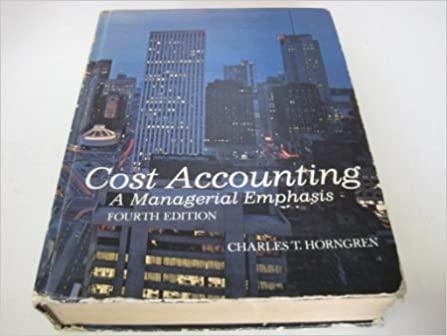Human Resources Accounting The body of the chapter referred to experimentation with human-resource accounting. Exhibit 6-4 is
Question:
Human Resources Accounting ‘The body of the chapter referred to experimentation with human-resource accounting. Exhibit 6-4 is an excerpt from the Barry Corporation’s annual report for 1973. The Barry Corporation is a manufacturer of leisure footwear in Columbus, Ohio. The data in Exhibit 6-4 are supplementary to the usual audited financial statements that are also pre- sented in the annual report.
Many variations in human-resource accounting are possible, such as using some approximation of current values, but the Barry Corporation has confined its records to historical costs. The annual report explains:
“Human resource accounting is an attempt to identify, quantify and report investments made in recruiting, acquiring, training, familiarizing and develop- ing people. Outlay costs connected with these activities are accumulated and capitalized where they are expected to have value beyond the current account- ing period. The basic outlays in connection with acquiring and integrating new people are amortized over their expected tenure with the company. Invest- ments made for training or development are amortized over a much shorter period of time. Total write-off of an individual’s account occurs upon his departure from the company.”
- Were there more write-offs of human assets during 1973 than new investments? Explain, using the numbers given in Exhibit 6-4. Why do you think that advocates of human resource accounting prefer such a formal approach instead of less formal measures like employee-attitude surveys, employee-turnover measures, absenteeism, and similar measures? Do you support the use of human-resource accounting? Explain your position.
Step by Step Answer:






